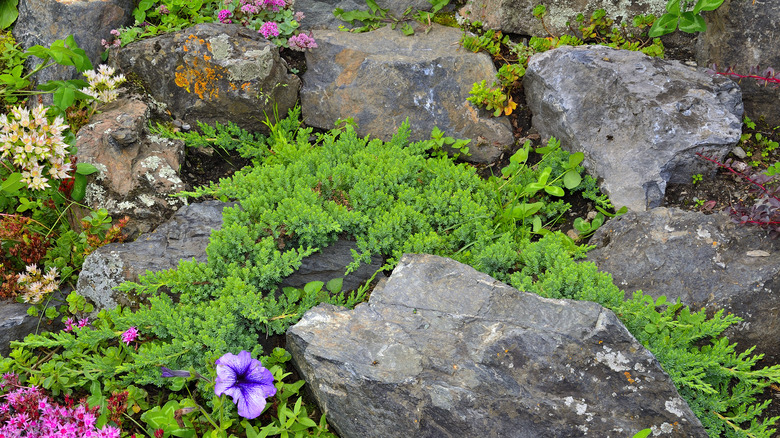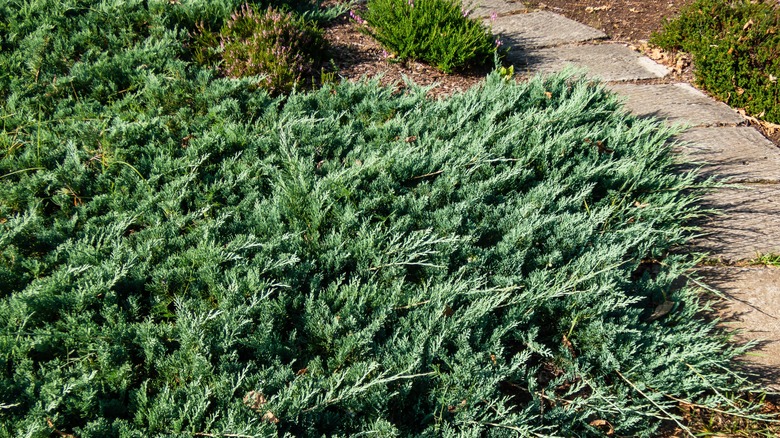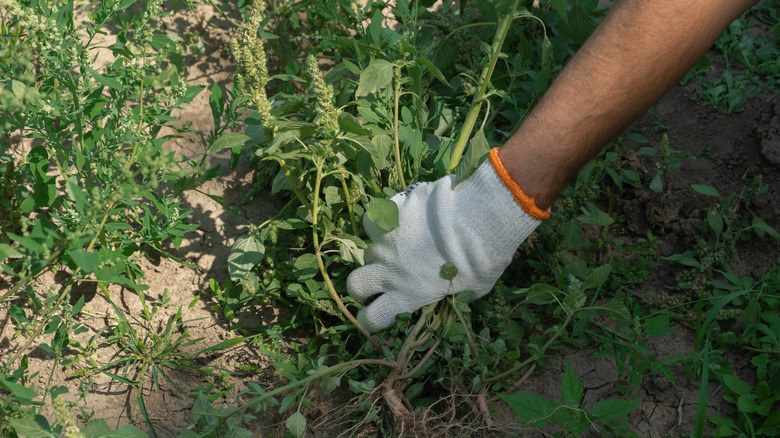The Low-Maintenance Shrub That Can Help Choke Out Weeds
Constantly pulling weeds in your yard can be a never-ending headache, and it can be more than frustrating to only find them reappear a week later. Weeds are incredibly difficult to get rid of because it usually takes two to three years for the seeds to die off, and some broadleaf weeds will keep showing up for several decades. In particular, parasitic weeds can do an incredible amount of damage to your prized landscape — they not only look unappealing, but also take up resources your beloved plants need such as light, nutrients, soil, space, and water — some weeds can even produce toxic chemicals.
A natural option to get rid of pesky weeds is to plant a ground cover to crowd them out and block the light that they need to grow. There are several different types of ground covers, but one that does exceptionally well and adapts easily to most climates is creeping juniper.
Ground covers are an easy organic way to suppress weeds
Creeping juniper is a low-growing evergreen shrub that will make your landscaping look great all year and it is often used as a ground cover. It easily spreads four to 10 feet like a thick mat and has a height of about one to two feet. The scale-like leaves are green with a hint of blue and often turn a purplish color in the winter. Because it grows densely and blankets the ground, creeping juniper is ideal for weed suppression.
Once ground cover is established, it takes up space where weeds may otherwise grow, helping to stifle unwanted plant life in your garden. In this case, creeping juniper competes with weed seedlings for light, nutrients, and moisture, so the weeds that do survive remain small and easy to remove. It's often planted on sloped or rocky areas to smother weeds, but also works great in rock gardens, flower beds, or as borders.
Creeping juniper needs to mature in order to supress weeds
Keep in mind that creeping juniper will only work as a weed suppressant once it becomes fully established which takes about two to three years. Until then, you will need to pull and watch for weeds so they do not rapidly spread. To control them, you can lay down a weed barrier — the cloth helps block the sunlight from reaching the ground, so it's more difficult for weeds to grow. And if you're curious about what type of weeds you're dealing with, here are 30 common weeds and how to identify them.
Anytime between spring and fall is fine to plant the evergreen shrub, but the ideal time is spring so that the roots can get established ahead of the heat of summer and the cold of winter. Once the plant is firmly rooted in the ground, it can tolerate both extreme seasons, however creeping junipers need full sun and grow in loamy slightly clay soils. Once established, it's easy to maintain, and the tough low-growing shrub not only beautifies your landscape but should take care of weed growth at the same time.



